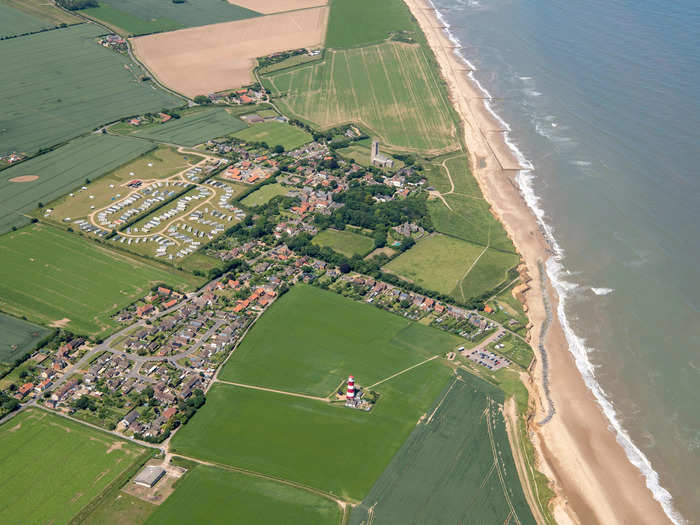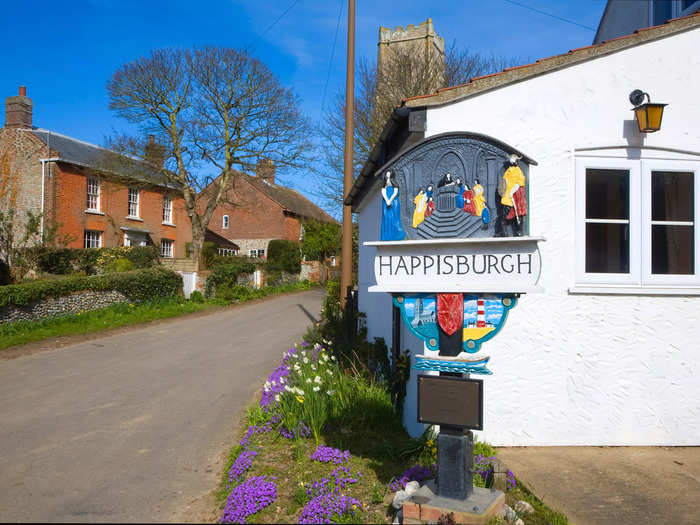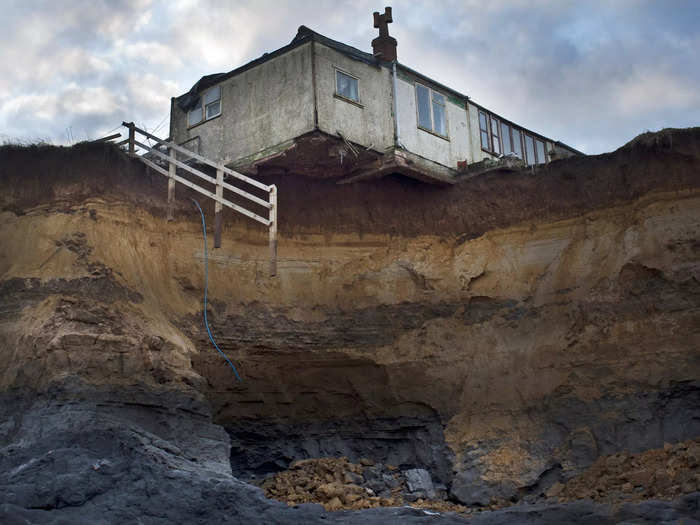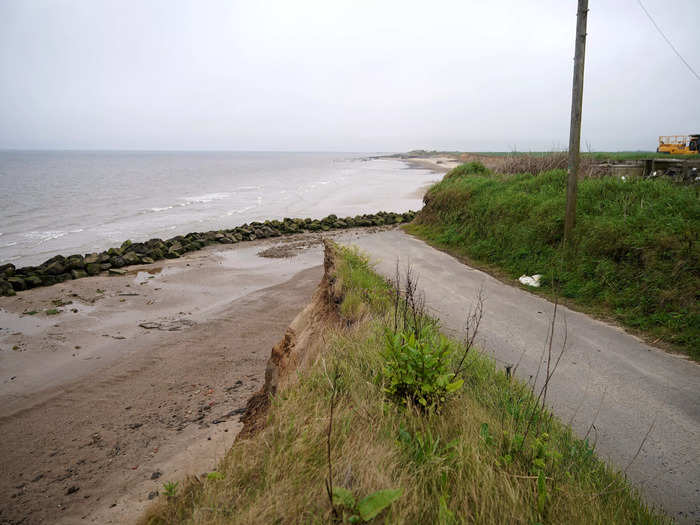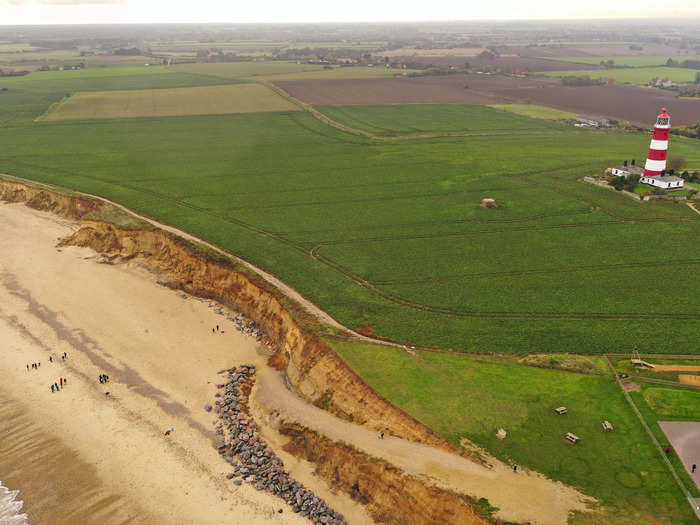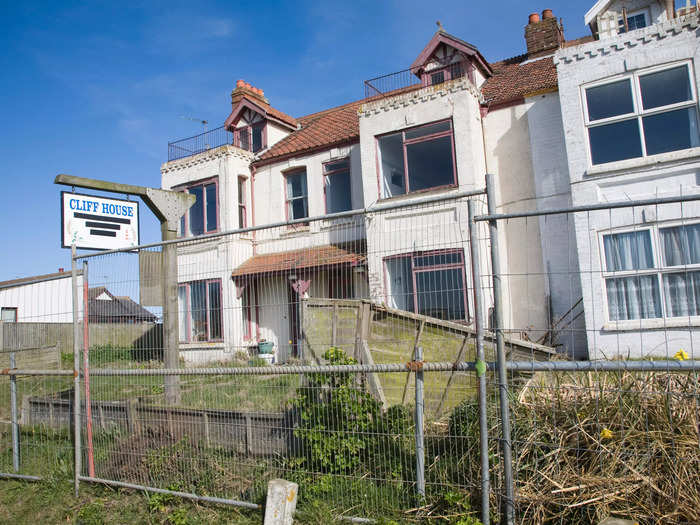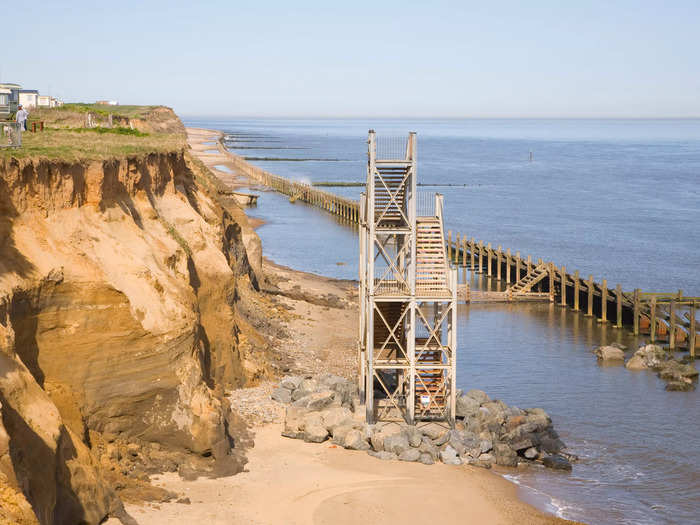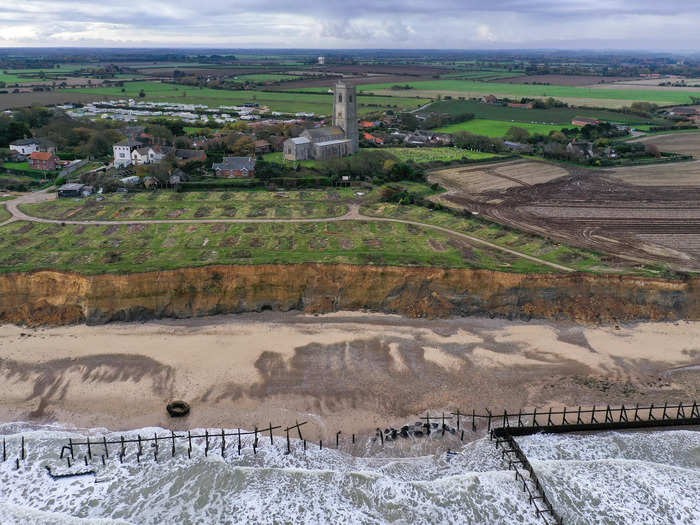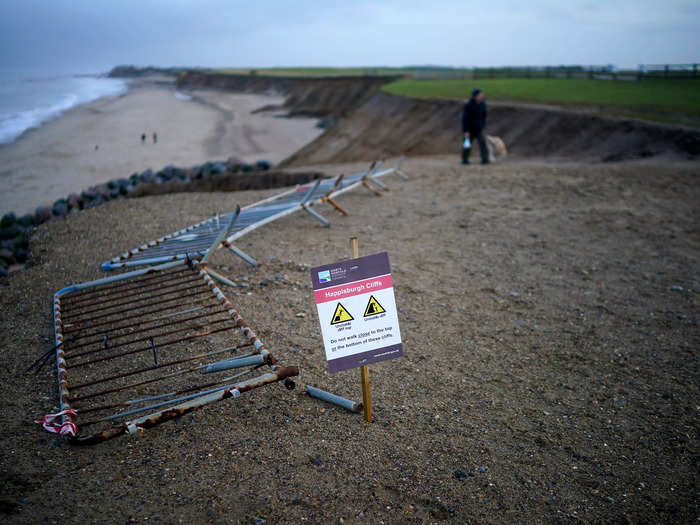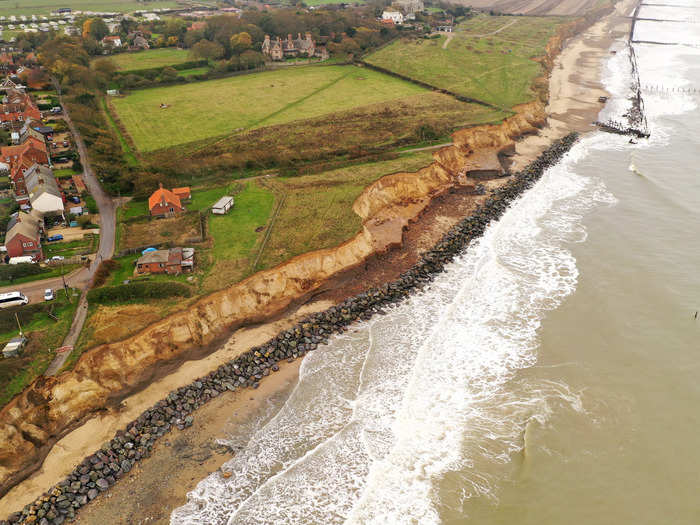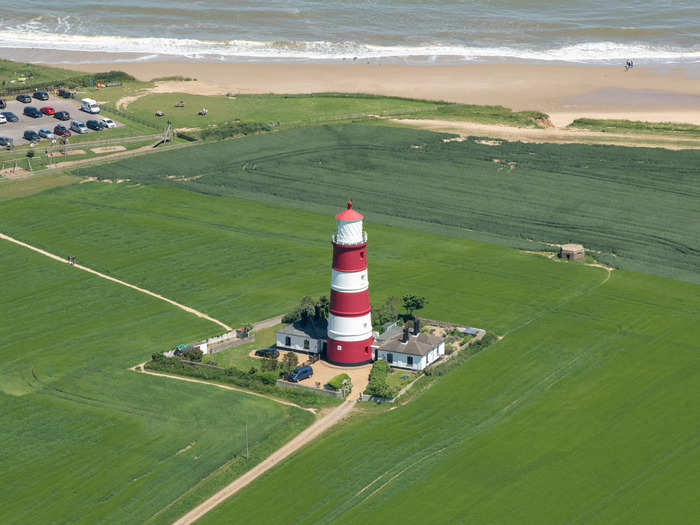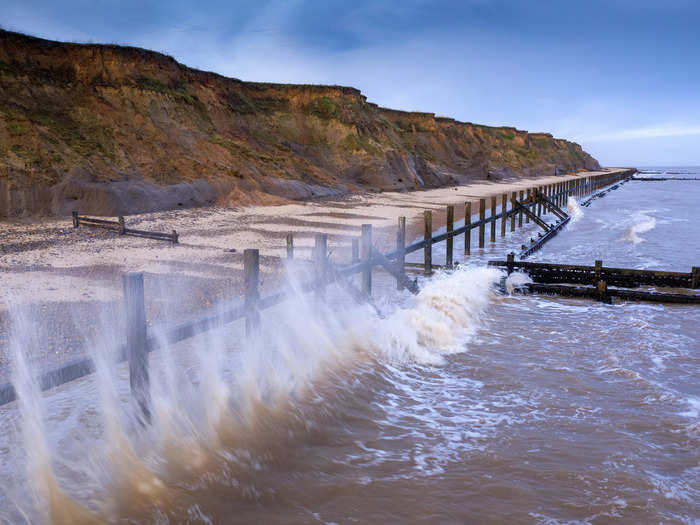The end of a tarmac road shows the devastation caused by coastal erosion of the cliff face in the village of Happisburgh on November 6, 2019.Christopher Furlong/Getty Images
- Happisburgh, located in England's Norfolk county, has been crumbling into the sea.
- Coastal erosion has plagued the village for decades, and could be worsened by increasing storms.
A small English village on the North Sea coast with thousands of years of history has been crumbling into the sea due to decades of coastal erosion.
Happisburgh, located in Norfolk County, has seen dozens of homes wash away to sea as the cliff face edges closer and closer to its remaining residents.
Photos show how the sea could soon swallow more of the historic town if the coastal erosion continues.
Happisburgh, pronounced "haze-bruh," is home to about 1,400 people and about 600 homes.
Aerial view of Happisburgh, Norfolk, England, in 2021. Historic England Archive/Heritage Images/Getty Images
Though Happisburgh is currently a seaside town, it was previously further from shore. Records suggest more than 820 feet of land was swept away between 1600 to 1850.
Village sign and houses in Happisburgh, Norfolk, England. Geography Photos/Universal Images Group/Getty Images
An increase in storms that are linked to climate change may be exacerbating the erosion of the sandy shoreline. Storm surges cause raised water levels that batter the shore, causing more erosion.
Eroded shoreline at Happisburgh, Norfolk, United Kingdom, pictured in 2006. Tim Graham/Getty Images
Bryony Nierop-Reading, 77, refused an offer of about $65,800 in 2013 to evacuate her home before it ultimately fell into the sea in 2013 during a storm.
A house on the edge of a cliff after erosion from a North Sea storm surge, pictured on December 5, 2013, in Happisburgh, Norfolk, UK. David Tipling/Universal Images Group/Getty Images
One Happisburgh resident told the BBC when she purchased her home 18 years ago, it was in the middle of a street. Now, her house is the last one before the cliff's edge.
A road in Happisburgh, England, now falls straight off a sea cliff as a result of coastal erosion. Christopher Furlong/Getty Images
Many others in Happisburgh have already been forced to evacuate, with 34 homes getting swallowed by the sea over the past 20 years.
A general view of erosion to the cliff face in the village of Happisburgh on on November 06, 2019, in Great Yarmouth, England. Christopher Furlong/Getty Images
"It's changed unbelievably. You just don't recognize the place," a Happisburgh resident told Bloomberg. "Houses, friends that have lived in those houses, have all gone. It's all gone.'"
Houses abandoned and derelict awaiting demolition because of coastal erosion, Happisburgh, Norfolk, England, pictured in 2006. Geography Photos/Universal Images Group/Getty Images
Along with homes, the situation in Happisburgh is also washing away history, which has contributed to the village being a tourist attraction.
Former beach access stairs standing alone after the cliff receded due to coastal erosion in Happisburgh, Norfolk, England, pictured in 2006. Geography Photos/Universal Images Group/Getty Images
Scientists in 2014 discovered human footprints in Happisburgh that they said were 800,000 to 1 million years old, the most ancient ever found outside of Africa and the earliest sign of humans in Europe.
A general view of erosion to the cliff face and the scarred landscape of a former caravan site in the village of Happisburgh on November 06, 2019. Christopher Furlong/Getty Images
But the million-years-old footprints washed away just two weeks after they were discovered.
People walk past a recent landslip on the cliff edge and beach in the village of Happisburgh on January 27, 2021, in Happisburgh, England. Christopher Furlong/Getty Images
Happisburgh is also home to St. Mary's, a still-standing 14th-century church.
The end of a tarmac road shows the devastation caused by coastal erosion of the cliff face in the village of Happisburgh on November 06, 2019. Christopher Furlong/Getty Images
The red-and-white-striped Happisburgh Lighthouse, built in 1790, is the only independently run lighthouse in Great Britain.
Happisburgh Lighthouse, Norfolk, 2021. Historic England Archive/Heritage Images/Getty Images
Coastal defenses were put in place decades ago to help avoid coastal erosion, but those have been weakened over the years by the sea.
Waves crash against destroyed sea defenses in the coastal village of Happisburgh on January 16, 2020 in Great Yarmouth, United Kingdom. Christopher Furlong/Getty Images
The government is still working on solutions to address the situation, with many residents wishing officials would do more to defend the community.

